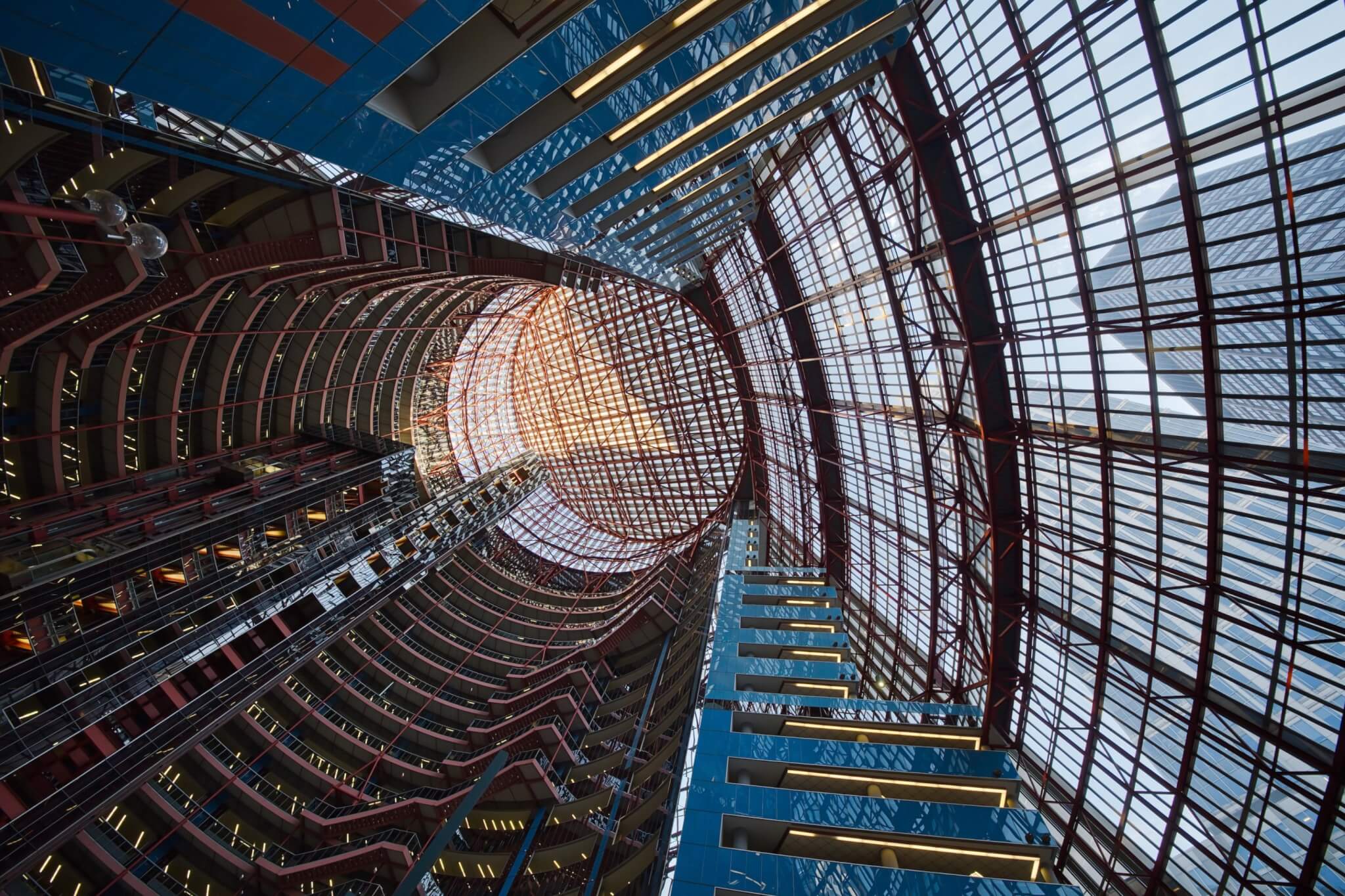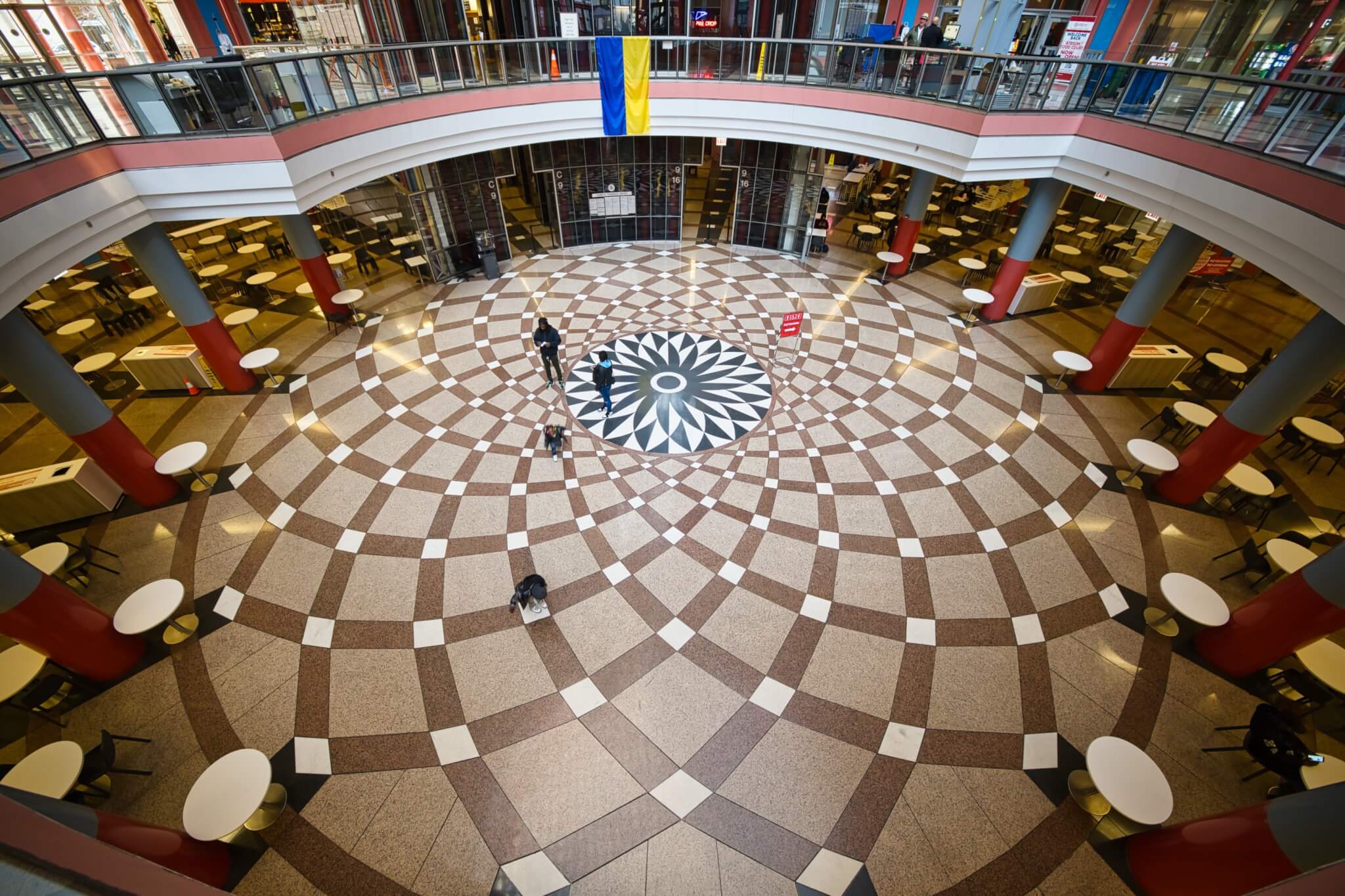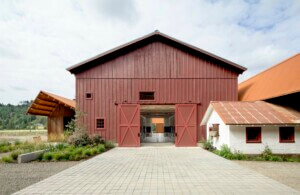The past few years have demonstrated Big Tech’s desire for brand-new “Big and Loud” buildings. Thankfully, Chicago has remained relatively immune to the trend: Unlike Norman Foster’s Apple Park in Cupertino or Amazon’s “Helix” headquarters in Arlington, Virginia (known for its “poop emoji” helical form), tech companies in Chicago have maintained a conservative architectural footprint that, surprisingly, has relied on existing building stock. Google, the most prominent of those tech giants, landed in Chicago’s West Loop in 2015 after rehabbing a modest cold storage building into an unshowy office loft that inspired less “architectural marvel” than it did property value growth in the surrounding neighborhood. But in July, Google announced that it will expand its offices into the James R. Thompson Center (JRTC)— launching its own local “Big and Loud” presence through adaptive reuse.
Designed by Helmut Jahn and built in 1985 to house State of Illinois offices, the JRTC, with its grand rotunda atrium and salmon-pink/sky-blue color scheme, has amassed a cultlike devotion within the international architecture community thanks to its postmodern style. Furthermore, the building’s public spaces have endeared it to much of Chicago’s general public: The oculus views are breathtaking, but the interior courtyard has long hosted pop-up vendors from small independent businesses, and a hefty Chicago Transit Authority hub occupies much of the building’s north facade and underground areas. As it is a public building, protests held outside have benefited from First Amendment protections without filing for permits, and with a below-grade food court, public bathrooms, and a large outdoor plaza for lunches, public life has arguably become the building’s muscle.
The JRTC’s most prominent “Big and Loud” features, outside of its spectacular presence, are its spectacular failures: The curved glass facade and inefficient heating and cooling systems left state employees working in a greenhouse during the summer or a chiller in the winter, and a granite panel fell from the building’s pedestrian arcade in 2009. Citing its high operating costs, maintenance issues, and the state’s budgetary challenges, the state moved to sell the building in 2015, prompting preservationists to campaign for its survival.

Landmarks Illinois launched its own campaign to save the JRTC, placing the building on its Most Endangered Historic Places list in 2017, 2018, 2019, and 2021. The building’s nomination for the National Register of Historic Places was prepared by Elizabeth Blasius, Jonathan Solomon, and AJ LaTrace. Blasius and Solomon lead Preservation Futures, a firm founded in 2021 which has been active in leading advocacy for the JRTC in the face of its potential demolition. (Blasius was previously a Midwest editor for AN.) Only last year did the State successfully find a buyer, JRTC Holdings, LLC, which agreed to preserve and adapt the building to the needs of modern tenants. Later, it was announced that Google and JRTC Holdings entered into a build-to-suit agreement for the redevelopment of the building, which Google intends to occupy upon completion of the renovation. Chicago-based firm Jahn, though without Jahn himself, who died last year, will again be the project architect.
While the sale and subsequent occupancy announcement provoked a sigh of relief among many of the architecture aficionados who have championed the building’s preservation, much remains to be revealed, particularly how Google plans to embrace—or axe—the building’s public spaces. Big Tech isn’t known for embracing the public. Architecture critic Kate Wagner has written at length about tech companies’ co-opting of public space; in a 2021 text for The New Republic, she wrote that Amazon’s “Helix” is “an architectural testament to corporate power[.] … It masks the complete takeover of a swath of the city and its commons behind an attractive trinket, whose true function is to serve as a site of Instagrammable consumption and free advertising.”
Consumption, however, is a main feature of the JRTC—particularly in its celebrated food court. The Sbarro Urbanists, a group of Thompson Center superfans who regularly meet for Sbarro pizza in the food court, recently held their last group gathering before the building closes for construction.
“As optimistic as I think a lot of us are about what’s going to happen with that project, there are no guarantees about public space. There’s no guarantee about whether the food court will be something that anyone other than Google employees can access in the future,” Sbarro Meet Up organizer and architecture photographer Eric Allix Rogers told AN. “I think if you ask anybody here, you’ll find that they would like those things to remain as kind of civic spaces, or at least commercial spaces.”

“We just don’t have a lot of spaces like this. If you want to spend time inside and just relax in this country, you have to do it in a car. And that’s one of the things I thought was really cool about this place is if you’re waiting for a train, you do it indoors, and you can get food,” added Sbarro attendee and software developer Aoife Fahey.
While Jahn could not comment on its plans for the future of the building’s public spaces, nor on the overall design itself, Bonnie McDonald, executive director of Landmarks Illinois, still has some hope. “The Thompson Center has also been a gathering place for protest, transit, commerce, and more within one of our city’s most inspirational indoor and outdoor public spaces,” she said. “We want to see continued public access to these spaces when it is converted to private use.”
While Big Tech can celebrate yet another architectural statement headquarters and preservationists can celebrate a major win for an often-squandered architectural heritage, those who have relied on the JRTC for its public access may be left out in the cold. In some ways it feels perhaps more egregious than the glass excreta under construction in Arlington; here, our masterpieces built for the public good are sold off to Google, a company with a history of urbanist ambitions laced with questionable privacy practices. Until Jahn reveals its final renderings, we’ll just have to remember the JRTC for what it was: an egalitarian postmodern palace.
Anjulie Rao is a Chicago-based critic and journalist covering the built environment.











